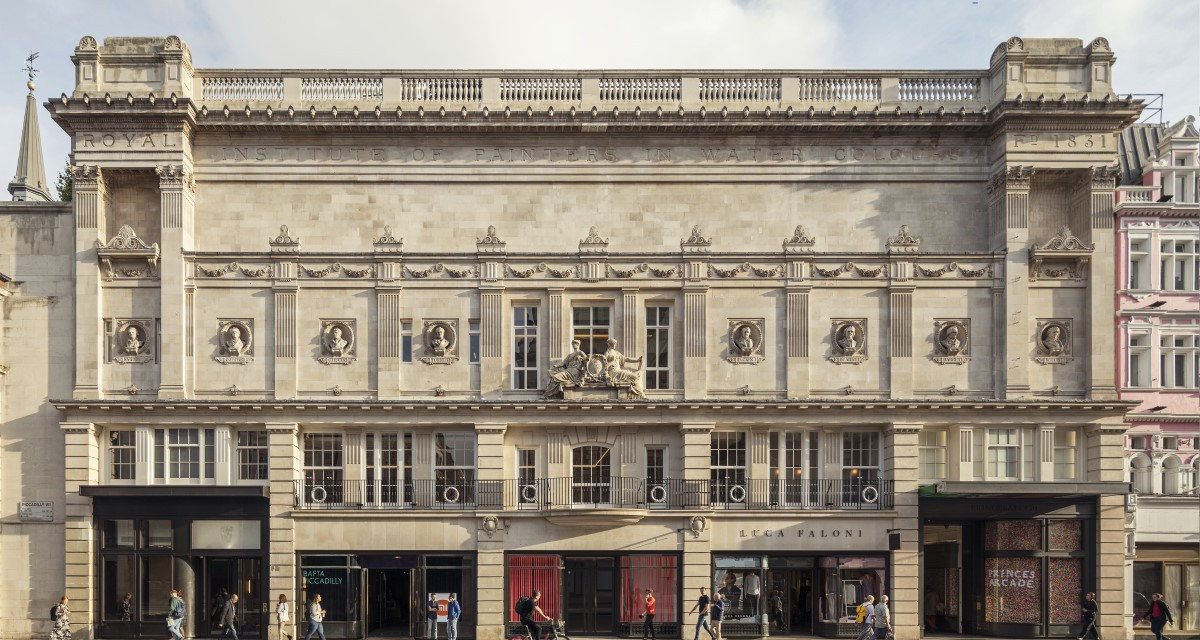We get a sneak preview into the newly-renovated on Piccadilly, where inclusivity is the name of the game.
By Jonathan Wiley
Unbeknown to many, world-leading independent arts charity BAFTA embarked on a transformation of its HQ at 195 Piccadilly in partnership with landlord, The Crown Estate.
The multi-million pound project was some eight years in the making and had a clear vision; to widen its reach in providing opportunities for all – regardless of background – and further help young people to develop key employability skills.
The charity’s first ever dedicated space for learning and talent development programmes – its centre for excellence for the creative industries – hopes to give 80,000 people a year the tools to develop a career in film, TV and games.
On the face of it, with BAFTA celebrating its 75th anniversary this year, the timing for its grand unveiling seems perfect. But Pauline Campbell, BAFTA’s head of property who has overseen the project, confesses serendipity had a role to play.
“Covid has been a success story for the project really, which sounds awful,” she says. “Logistically it was a nightmare, but in terms of the usefulness for the project it was really good. We had already budgeted for the loss of revenue and we always knew we were going to be closed during those periods.”
With construction able to continue as Covid took hold, contractor Knight Harwood “wrote a million procedures”, newsletters were sent to residents, the basement area of 194 Piccadilly was converted into a welfare space and, amid last year’s sweltering spring heat, work continued.
Remarkably, the building was only fully closed for seven weeks and Pauline says they are due to come in on budget too. “It has been quite phenomenal,” she says.
So what has changed? The biggest change is a newly-created fourth floor; the Richard Attenborough Rooms. Home to the members’ bar, it also provides a space for exhibitions and events. “We needed more space,” says Pauline. “We had so much we wanted to do and we had lots of conversations about ‘do we move out? Do we go to a new build in a new area? It kept coming back to ‘no, we need to be here.’”
They have restored the beautiful Victorian rooflights that were previously hidden above the ceiling of the Princess Anne theatre. “When we moved in in 1976, we put a screening room in and in order to make it a dark space, we built a box within the old galleries,” says Pauline, adding: “In the most basic terms, we jacked them up by three metres.”
A tour of the building highlights the sumptuous renovation; from the open-air terrace to the ruby red Run Run Shaw screening room (in honour of the renowned producer), revamped Princess Anne Theatre and light, airy Reuben Gallery awash with hard-wearing marble. The entire second floor is dedicated to the new dedicated learning space and there are myriad spaces – from the Ray Dolby Room to the Kenworthy Room (named after producer and former BAFTA vice president Duncan Kenworthy) equipped with state-of-the-art audio and visual technology, worth a cool £3 million alone.
“Putting that technology in has meant we have a much greater reach and we can do hybrid events,” says Pauline. “The biggest challenge was ‘how do we create a centre for excellence here that we can get everything we want in, but are also inclusive and haven’t become London-centric? We need to spread our message country-wide and worldwide.”
Sustainability has been forefront in the use of materials throughout – there is even a carbon-sucking polymer in one room that has been 3D printed – and a time capsule, capturing primary school children’s thoughts on Covid, has been hidden in the building to be opened in 2047 for BAFTA’s 100th anniversary. Next year, for its 75th anniversary, there will be a particular focus on how the redevelopment can target a younger audience and find creative talent. While the glamour of yesteryear is to be celebrated, BAFTA isn’t losing sight of its charitable remit. “Amanda [Berry, BAFTA’s CEO]’s favourite saying is that talent is everywhere, but opportunity isn’t and that is our mission statement,” says Pauline, adding, “We have left a legacy here for two generations.”
Historic finds
The redevelopment of a building that dates back to 1883 (formerly the home of the Royal Institute of Painters in Watercolours) has unearthed a series of curious finds. Rolled up newspapers (probably left by builders at the time) including The Sun from 1975 and The Daily Herald from November 1933 with US President, Franklin D Roosevelt in the headlines. A BAFTA mask was found in the roof well of the Princess Anne theatre and a dance card was uncovered dating back to March 1922 at the ‘Princes’ Galleries, Piccadilly.’
There were also 1920s’ match boxes found in the plaster of a rooflight and Senior Service cigarette packets from the ‘30s and ‘70s. Pauline’s favourite discovery dates back to the 1950s when airline carrier Pan Am (Pan American World Airways) had an office on the building’s first floor. “It was the absolute golden age of flying and we found a whole raft of faxes that had been sent from Pan Am’s offices with thank yous from clients and from the agents of clients. Luckily, someone had photocopied them at some stage so they were on normal paper and they survived.”
Many of the discoveries have been digitised and are on BAFTA’s website, but there is a macabre finding that is less well publicised. Several years ago, when work was carried out to fit out Jamie Oliver’s Barbecoa restaurant at 194 Piccadilly (now closed), up to 70 bodies were found. “I think it was 60 or 70 in the churchyard,” says Pauline. “We think that St James’s churchyard was longer and when they were putting in the drainage for Barbecoa, they found there were some coffins there. They were all on top of each other and MOLA [Museum of London Archaeology] was brought in and everything was treated very respectfully. The working idea is that when the buildings were built, they were moved into the consecrated ground which has become smaller.”








